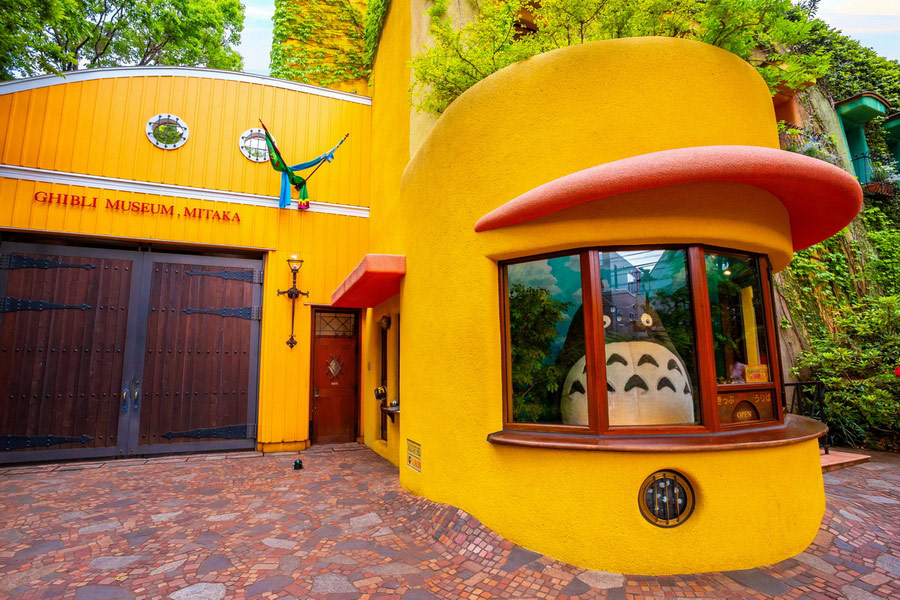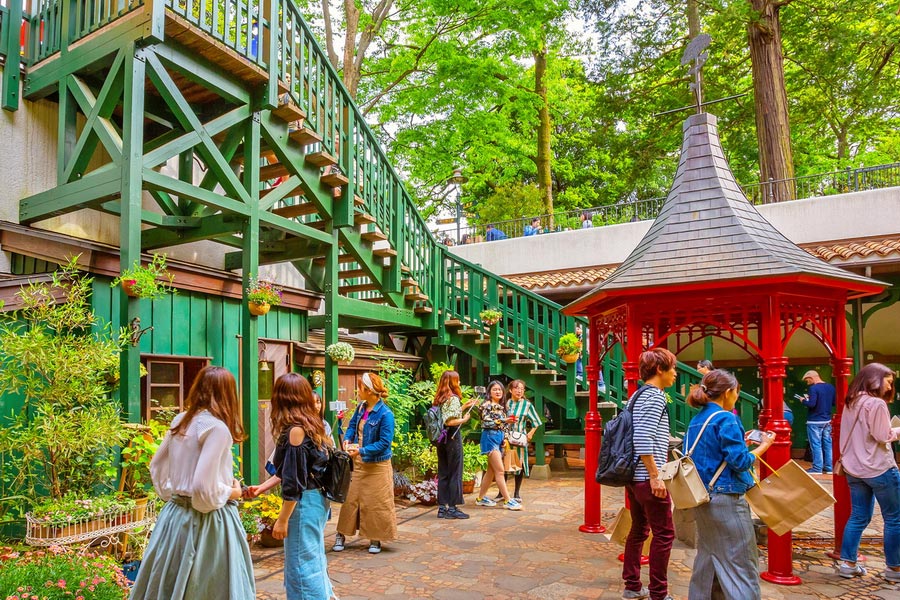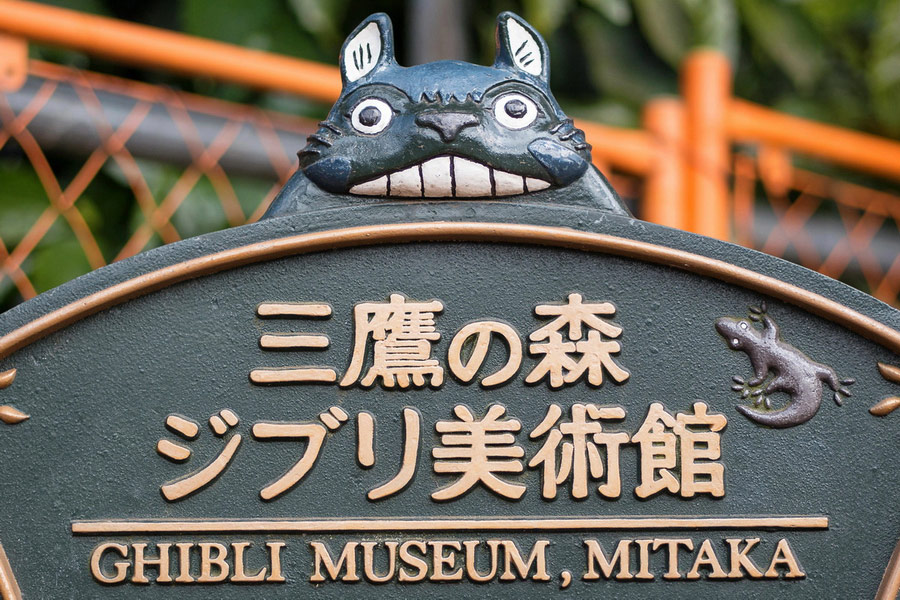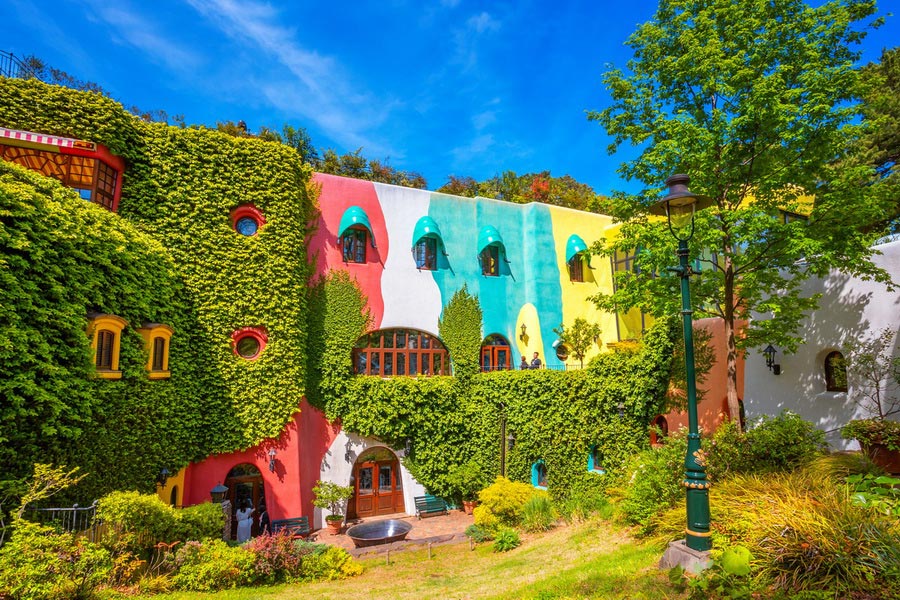Ghibli Museum, Tokyo

The Ghibli Museum (三鷹の森ジブリ美術館, Mitaka no Mori Jiburi Bijutsukan) is a magical place where the enchanting worlds of Japanese animation come to life. Located in Mitaka, a peaceful corner of Inokashira Park in western Tokyo, this one-of-a-kind museum is dedicated to Studio Ghibli's work. It offers visitors an immersive, imaginative, and heartfelt film experience, attracting both devoted fans of the studio and tourists eager to explore another facet of Japanese culture.
History
Hayao Miyazaki is a renowned Japanese animation director, who founded Studio Ghibli with Isao Takahata. Hayao Miyazaki is celebrated for his work in fantasy, steampunk, and children's fairy tales, with notable films including Howl's Moving Castle (2004), Ponyo (2008), My Neighbor Totoro (1988), and Spirited Away (2001), the latter of which won the Academy Award for Best Animated Feature of the 52nd Berlin International Film Festival in 2002.
The Ghibli Museum opened its doors to the public on 1 October 2001, a project born from the collaborative efforts of Hayao Miyazaki and his team. The museum's primary aim is to tell the story of the creation of animation and to allow visitors to experience the enchanting magic created by the artists of Studio Ghibli. Hayao Miyazaki envisioned the museum as a space where visitors could embrace their inner child, by touching the exhibits, playing, and actively participating rather than simply observing. He personally designed the museum using storyboards similar to those he creates for his films.
The building itself is a work of art, combining elements of medieval European castles, charming houses reminiscent of those from the studio's animated films, and unique Japanese architectural styles. Every detail of the interior has been meticulously crafted to make visitors feel as if they were stepping into one of Ghibli's captivating stories.
Central Hall

A vibrant meeting place for visitors, the Central Hall is the heart of the Ghibli Museum and marks the beginning of your enchanting journey through the magical realms of animation. Every aspect of this space has been meticulously crafted, from the stunning architecture and intricate stained glass windows to the thoughtfully designed walls and staircases, all designed to immerse you in a creative and imaginative atmosphere. The hall serves as a central hub, connecting all of the museum's major exhibitions. From here you can access various themed rooms, ascend to the upper floors via winding staircases, and find a striking spiral metal staircase at the centre, reminiscent of a fairy tale, which leads you higher up to more exhibits. The staircase has a steampunk aspect, which contributes to the museum's whimsical atmosphere.
Permanent Exhibition Hall
Inside the museum, the exhibits are organised into several themed areas, the largest of which is dedicated to the art of animation. This section contains sketches and designs from popular films such as Spirited Away, Howl's Moving Castle, and My Neighbor Totoro. Visitors can explore how creative ideas are born and witness the transformation of characters from simple sketches to vivid, unforgettable images on screen. Each exhibit invites you to delve deeper into the magical process that brings Studio Ghibli's beloved stories to life.
Temporary Exhibition Hall

An outstanding feature of the Ghibli Museum is the Temporary Exhibition Hall, which offers guests a fresh and distinct experience each time they visit. Regularly updated, these exhibitions offer a glimpse into the studio's classic works as well as previously unseen materials, inviting you to discover the intricate process of animation. Find out how Ghibli's creations are influenced by Japanese mythology, folk legends, and Western culture, such as the literary elements reflected in Howl's Moving Castle. Each temporary exhibition focuses on a specific theme or aspect of Studio Ghibli's work, which may be centered on a particular film, character, or even the technology behind animation. Past exhibitions have focused on films such as Howl's Moving Castle and Spirited Away, featuring rare sketches, storyboards, and original designs not included in the main exhibition.
A Boy's Room
One of the most enchanting corners of the Ghibli Museum is A Boy's Room, which recreates the workspace of a young animator or dreamer, full of inspiration and creativity. More than just an exhibition room, it is a vivid reproduction of the place where dreams and ideas come to life, filled with exquisite details that reveal its inhabitant's inner world. The room has a cosy, lived-in feel, as if its owner had just stepped away from his creative endeavours. Sketches, books, pencils, and brushes are scattered everywhere, while old posters on the walls reveal a deep passion for animation and cinema. The items on the shelves may remind the discerning viewer of objects from films such as Whisper of the Heart or My Neighbor Totoro, subtly referencing the themes of childhood, creativity, and self-discovery that are central to Hayao Miyazaki's work.
Saturn Theater
The Saturn Theater, a cosy venue tucked away in the basement of the museum, has a seating capacity of only 80, providing an intimate viewing experience. It showcases short films created exclusively for the museum, which cannot be watched anywhere else. Each film is infused with the unique charm for which Studio Ghibli is renowned, making every visit a memorable experience for guests who have the opportunity to enjoy these special screenings.
Sculptures

In addition to films, the museum features a range of character sculptures, models of buildings, and even full reconstructions of scenes from beloved Ghibli films. Visitors can board the iconic cat bus from My Neighbor Totoro or admire the famous clock from Howl's Moving Castle. One of the most striking exhibits is the towering robot statue from Castle in the Sky (1986), which stands proudly on the museum's roof. This famous character will make nostalgic any fan of Ghibli's enchanting films.
‘MAMMA AIUTO!’
After exploring the museum, guests can visit the 'MAMMA AIUTO!' (マンマユート, Manmayūto) gift shop, named after the celestial pirates of 'Porco Rosso'. The name translates from Italian as 'Mama, help me' and perfectly encapsulates the spirit of adventure found in Ghibli films. The shop offers exclusive merchandise, including character figurines, picture books, original posters, and more. Many items can only be purchased here, making them unique souvenirs that cannot be found in regular stores.
Straw Hat Café
For those wishing to enjoy a meal, the museum has the Straw Hat Café, inspired by Sophie Hatter from Howl's Moving Castle. The café's menu offers a selection of simple but delicious dishes made with fresh Japanese ingredients. Guests can enjoy breaded pork cutlets, hot dogs, traditional Japanese desserts, or sip a cup of tea while enjoying the picturesque views of Inokashira Park.
TRI HAWKS
TRI HAWKS, a reading room and a bookstore, offers visitors an extensive collection of books on animation, art, film, and illustration. In this haven, you'll discover works that span the history of animation as well as art albums of Ghibli films, appealing to professionals and enthusiasts alike. Most of the books available are collector's editions, featuring rare sketches, insightful commentary from directors and artists, and unique illustrations that take the reader right into the heart of the filmmaking process.
There is a strong focus on children's literature, reflecting Hayao Miyazaki's commitment to inspiring and educating the younger generation. The shop offers a wide range of children's books with illustrations and stories that resonate with the enchanting spirit of Ghibli's worlds.
More than just a bookshop, TRI HAWKS offers a cosy atmosphere with wooden shelves, soft lighting, and comfortable reading chairs. Guests are welcome to choose a book from the shelves, find a quiet corner, and lose themselves in the fantasy worlds created by Ghibli and other talented authors whose works are displayed here.
How to Get to Ghibli Museum?

The museum is located in Mitaka, about 20 kilometres from downtown Tokyo. The most convenient way to get to the museum is to take the JR Chuo Line train, which departs from Tokyo Station and arrives at Mitaka Station in about 20-25 minutes. From Mitaka Station, visitors can enjoy a pleasant 15-minute walk through Inokashira Park to the museum or take a bus that runs directly from Mitaka Station to the museum every 15 minutes. Bus tickets can be conveniently purchased from a ticket machine at bus stop No. 9.
Tips for Visiting Ghibli Museum

Address: 1-1-83 Shimorenjaku, Mitaka-shi, Tokyo 181-0013, Japan
Visiting Times
- First admission: 10:00 to 11:00 AM.
- Second admission: 12:00 to 1:00 PM.
- Third admission: 2:00 to 3:00 PM.
- Fourth admission: 4:00 to 5:00 PM.
The number of admission times may vary depending on the museum's opening hours.
- Tickets are issued to visitors in exchange for reservation coupons, and these tickets are uniquely made from pieces of actual 35mm film. You can hold your ticket up to the light to see which scene from a Ghibli film it represents.
- Please note that photography and video recording are not permitted inside the museum. This policy is in place to enhance the immersive experience for all visitors.
- Tickets for the Ghibli Museum must be purchased in advance, as they are not available for sale on-site. You can buy tickets online or at Lawson Ticket terminals located throughout Japan. Tickets go on sale at 10:00 AM. (JST) local time on the 10th of each month for the following month. For example, tickets for February 1-28 will go on sale at 10:00 AM. on 10 January. The price of the tickets depends on the age. Ages 19 and over - JPY 1,000; Ages 13 to 18 - JPY 700, Ages 4 to 6 - JPY 100, Ages 3 and under – FREE (last update – October 2024).
- To avoid large crowds, it is advisable to plan your visit during weekdays. The museum tends to be particularly popular with locals and tourists at weekends and on public holidays. Also be aware that the museum is generally closed on Tuesdays.
The Ghibli Museum in Tokyo is a unique destination where the enchanting worlds of Japanese animation come to life. It serves as a magical portal to childhood, allowing everyone, regardless of age, to feel part of a captivating story. When planning your trip to Japan, make sure to include it on your itinerary, and get ready for one of the most memorable experiences of your journey!

